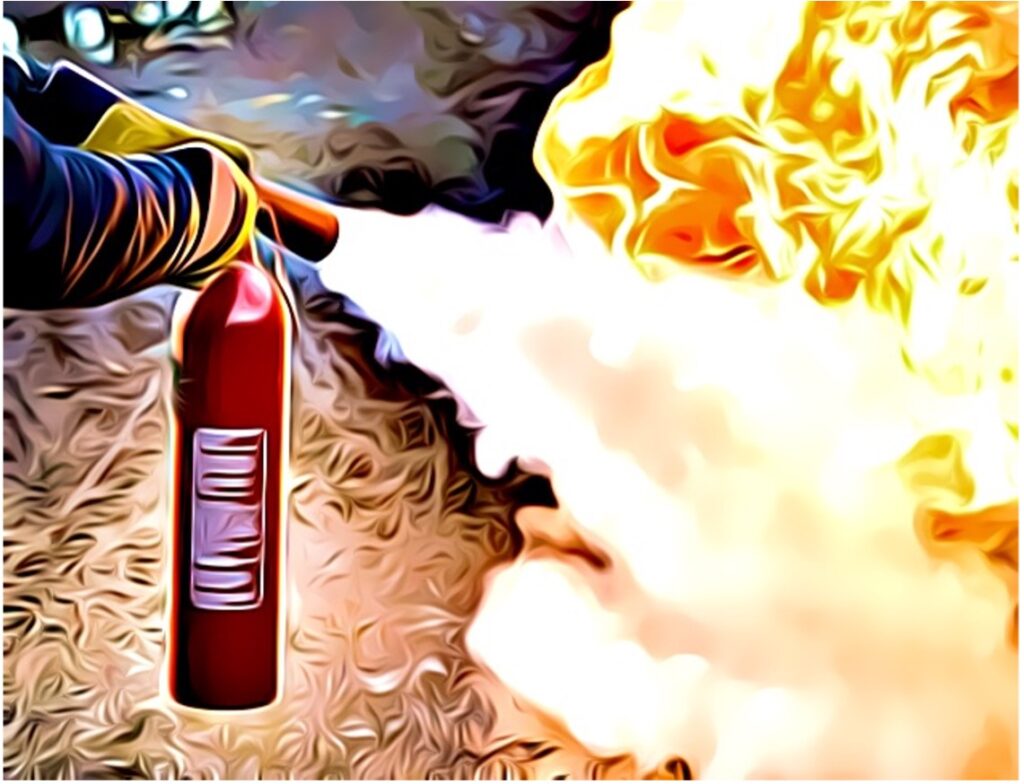10. Emergency Procedures
By the end of this topic you will be able to:
- Explain the importance of the venue’s fire & evacuation procedures
- Identify common human responses in an emergency
- List the reasons for occupancy figures
- Identify the 3 elements of fire
- List the types of fire extinguishers and their use
- State the procedures for dealing with a bomb threat
- Understand how to remain alert and vigilant of unusual and suspicious activity
- Explain what action to take in a first response situation requiring first aid
- Specify who to contact in first aid situations.

IMPORTANT information
- Assignment instructions contain all emergency procedures – they must be read and understood
- Location of emergency telephones and radios
- Fire hydrants and related equipment
- Contact numbers of key personnel
- Evacuation/muster points
- Readily available and up to date maps/plans of site
- Prior knowledge of emergency and alarm systems, sounders and lights etc
- Where emergency isolation points are located (Gas/Electric/Water etc).
Three Elements of Fire
What components do you think are needed for a fire to begin?
Oxygen, Heat (ignition source) and Fuel.
Fire is a chemical reaction that gives off light and heat. Fire occurs when oxygen, heat and a fuel source come together, this is known as the ‘fire triangle’. If any of these components are absent a fire cannot occur.
By knowing the various sources of each of these components, you may be able to prevent a fire from happening.
Classification of Fire
Fire falls into five classes:
A = Textiles (Wood, Paper, Cloth, etc)
B = Liquids (Petrol, Flammable Liquids B1 = soluble, B2 = non-soluble)
C = Gases (Oxygen, Propane, Butane)
D = Metals (Aluminium, Magnesium)
F = Fats (Cooking oil, Lard, Butter)
An electrical fire DOES NOT fall into any of the above classes nor does it have a classification of its own.
Fire Extinguishers
Fire extinguishers should only be used by those who have been trained to use them. They should only be used at the ignition stage in a fire’s development.
Extinguishers work by:
Cooling – reducing or limiting the temperature to take the heat out of the fire
Smothering – limiting the oxygen available by smothering and preventing the oxygen from mixing with the flammable vapour
Starving- limiting the fuel supply by removing the source of the fuel.
A chemical reaction – interrupting the chain of combustion
Key Points for Using Fire Extinguishers
- Always read the label on the extinguisher
- Ensure your exit is clear
- Know where fire extinguishers are located
- Know how they operate
- Know the colour coding
- Never attempt to fight any fire unless safe to do so
Extinguishers are typically red with 5% of the surface area of the cylinder colour taken up by a band with the colour that indicates the type of extinguisher that it is.
All red- water
Blue – dry powder
Grey – foam
Black – co2
Yellow–wet chemical
Each type of fire extinguisher is suitable for certain types of fires.
Water extinguisher – Class A fire
Dry powder extinguisher – Class A, Class b, Class c and Electrical
Caron dioxide – Class B and Electrical
Foam – Class A Class B
Wet chemical – Class F
Other Fire Fighting Equipment
- Fire Blankets
- Gas-based flooding system
- Dry and Wet Risers
- Sprinklers
- Foam Flooding
- Fire Doors
On Discovering a Fire
F Find
I Inform
R Restrict
E Evacuate/Extinguish
If a door supervisor discovers a fire, the following procedure should be followed:
- Sound the alarm
- Call the Fire Brigade and other emergency services if needed
- Inform the control room
- Assist in evacuation if needed.
Remaining alert of unusual or suspicious activity
Look out for:
- Suspicious or out-of-place objects in toilets etc
- Unusual behaviour – loitering, watching staff or CCTV
Patrol:
Hallways
Corridors
Toilet areas
Make Sure:


Suspect Packages
In the event that a suspect package is found in the venue, the following procedures must be followed:




Telephone Bomb Threats
Guidelines for dealing with telephone bomb threats:




First Response Situations
Set Procedure








First Aid Contacts
Public Entertainment Licensed Venues- Must have a qualified and equipped First Aid Officer
Other Venues- May have a nominated First Aid Officer
In all other cases call an ambulance
